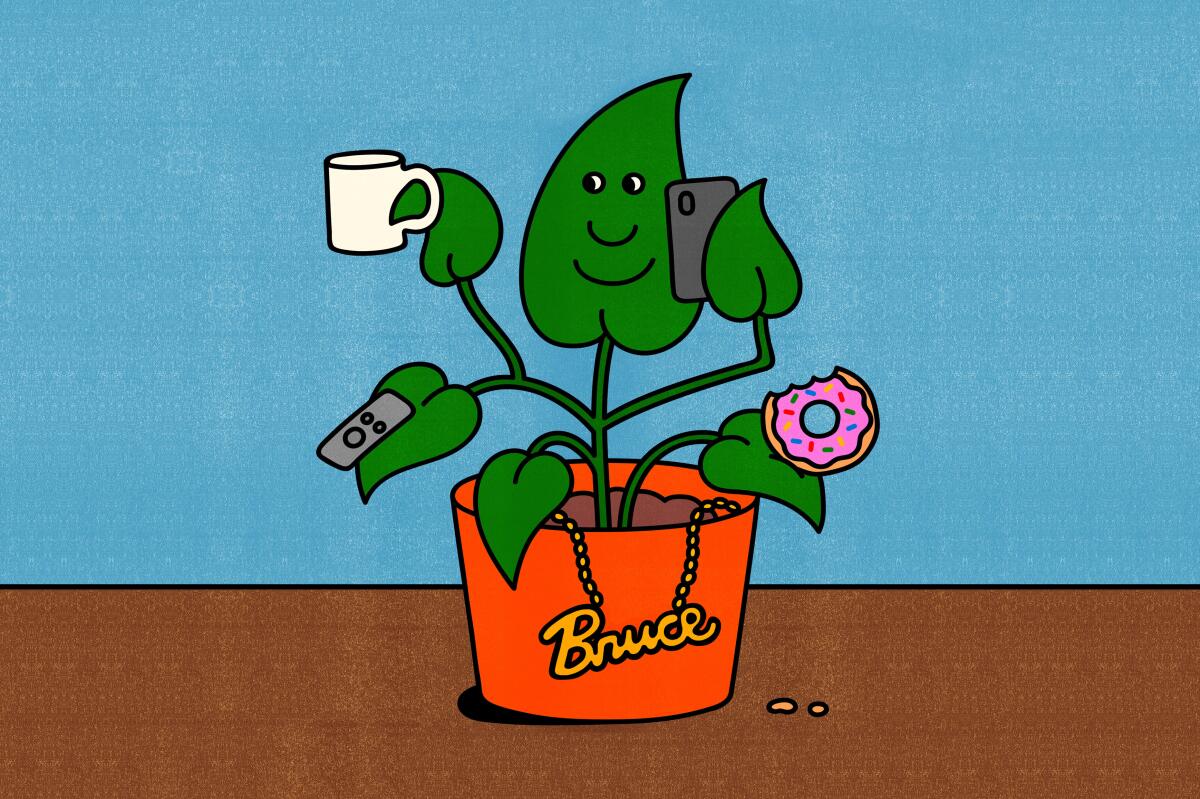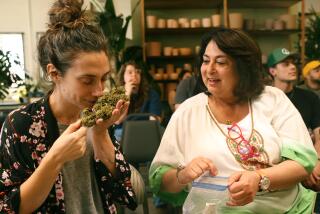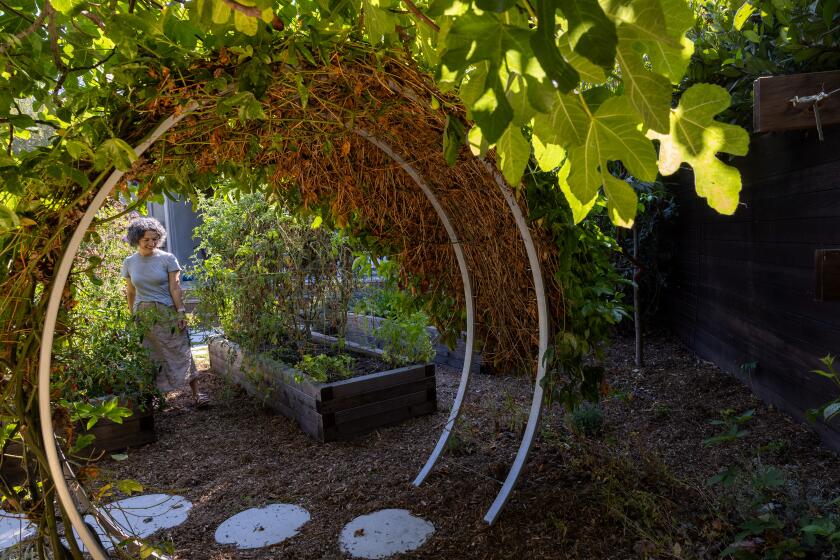The very specific rules for naming your houseplants, according to scientists

- Share via
Dracaena trifasciata isn’t satisfied with just one name.
Also known as the snake plant, St. George’s sword, viper’s bowstring hemp or, for the vengeful among us, mother-in-law’s tongue, the common houseplant has more than enough monikers. But it probably wouldn’t mind if you gave it another. Like Bruce or Maud or Harriet. That way, you’ll both feel a little less lonely.
“Giving something a name is a part of having a relationship,” said Norbert Schwarz, a professor of psychology at USC and a man who’s spent his life studying human judgment and decision making. “People anthropomorphize objects — products like their car or the trees in nature — mostly when they feel lonely or when they have an affiliation motive and want to be close to something. And it turns out that doing that has positive consequences.”
Those consequences, Schwarz said, include humans probably taking much better care of that plant, even if it’s beginning to droop, sag or bloom less often. “You don’t get rid of your friends just because they get old and cranky,” he says, just as you wouldn’t throw away a plant you took the time to name.
The consequences, as Schwarz alluded, include the potential to cure what Dr. Vivek Murthy, the former U.S. surgeon general, calls the “loneliness epidemic.”
Studies show singing or playing music for your plants could help them grow.
In 2017 in the Harvard Business Review, Murthy wrote, “We live in the most technologically connected age in the history of civilization, yet rates of loneliness have doubled since the 1980s.”
That loneliness, the U.S. Department of Health and Human Services reported, can cause a 29% increase in the risk of coronary heart disease. It also can cause a 32% increase in the risk of stroke, all adding up to an estimated $6.7 billion alone in annual federal spending attributed to social isolation among older adults.
And if naming a plant fights even a little of that isolation, Schwarz says, then go ahead.
But, if you’re going to give a cherished plant a name, it better be a good one. Though no baby name books exist for plants yet (get on that, Etsy sellers), there are a few people who can narrow your options.
“I guess I would say as a practicing taxonomist who names plants for a living, I’m kind of over that idea of naming plants by the time I get home,” said Alison Colwell, an assistant rare-plant botanist at the California Native Plant Society, who also teaches plant identification and classification.
Your guide to low-key houseplants that are practically kill-proof.
However, Colwell said, people come up with goofy names for plants all the time (see the above dig at in-laws everywhere with the mother-in-law’s tongue) and that’s just fine with the scientific community.
Here’s how scientists name their plants and what lessons you can take from their process when naming your houseplant.
Give it a first, middle and last name
Botanists live by a specific code laid out in the 200-plus-page rulebook called the “International Code of Botanical Nomenclature,” which means every plant must come with a first and last name (known as a binomial). The rule, created by the 18th century botanist Carl Linnaeus, means everything gets one name that represents its genus (like your last name) and a second name representing its species (like your first name).
The plants that don’t need a lot of light to thrive – perfect for shady spaces and dark corners.
But since this is your very special plant, you could take it a step further and give your fern or cactus or homegrown herbs a middle name too. Because, why not?
For your plants think: Queen Elizabeth Alexandra Mary Windsor for a majesty palm or Mr. Elon Reeve Musk for a money tree.
Go literal
“The botanical naming is all about being able to communicate precisely about plants because there are so many thousands of them in our environment,” Colwell said. “And when you study them, you can’t be talking about apples and oranges.”
Instead, scientists look to characteristics of a plant to give it a name. This is usually hyper-literal, such as the lilium candidum, or white lily.
For your plants think: Ruby for a new red rose bush, Sprite for your ‘Lemon Lime’ dracaena, or a snake plant named after your mother-in-law (what’s up, Cindy?).
You can’t name a plant after yourself
According to Colwell, botanists aren’t allowed to name plants after themselves. For you, that means no “David Jr.” or “Linda the second.” You can, however, name your plant after someone or something you love, as botanists at Duke University did in 2012 when they named two new fern species after Lady Gaga (Gaga germanotta and Gaga monstraparva).
For your plants think: A beloved grandmother, a favorite childhood pet or your favorite celebrity. Because who doesn’t need a Beyoncé orchid adorning the shelf?
Whatever you decide to name it is OK with us and with scientists the world over; it means you’re falling more in love with the planet around you.
“To name something is to love it, right?” said Liv O’Keeffe, senior director of communications and engagement at the California Native Plant Society. “Having a plant in the home is a pretty precious connection. It might be so dear that people are compelled to name that plant. And the more we can bring them into our lives, the more we’ll want to take care of them both in our homes and out in the wild as well.”
More to Read
Sign up for The Wild
We’ll help you find the best places to hike, bike and run, as well as the perfect silent spots for meditation and yoga.
You may occasionally receive promotional content from the Los Angeles Times.












